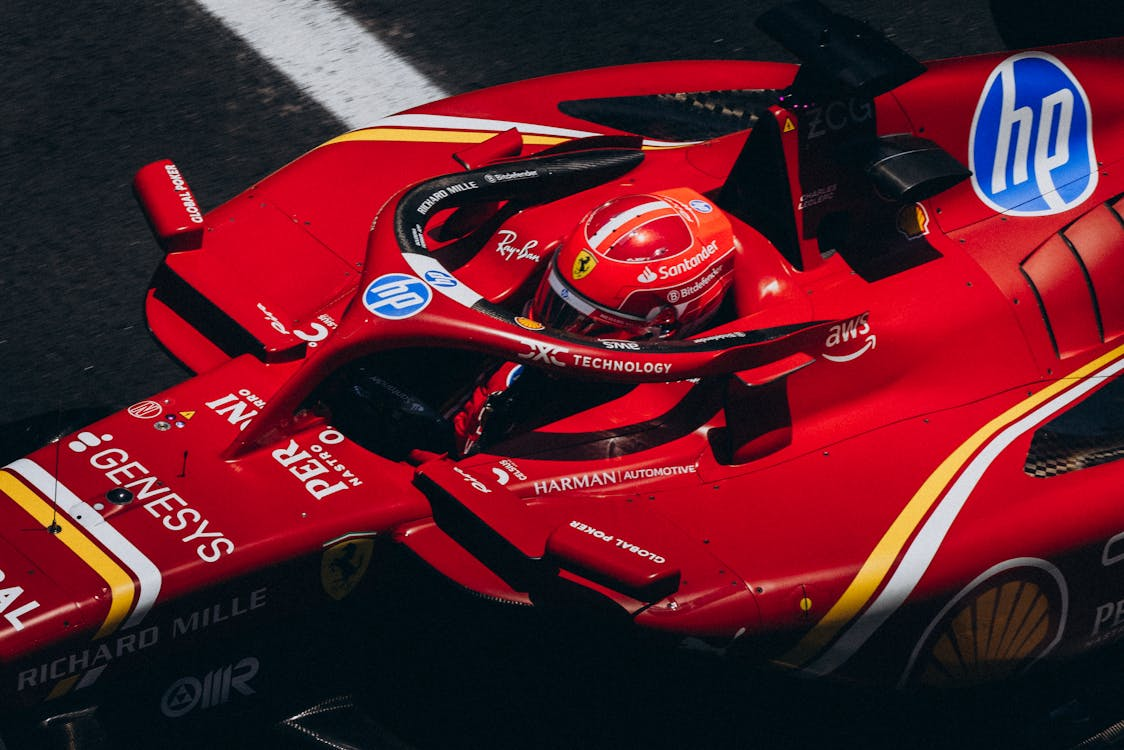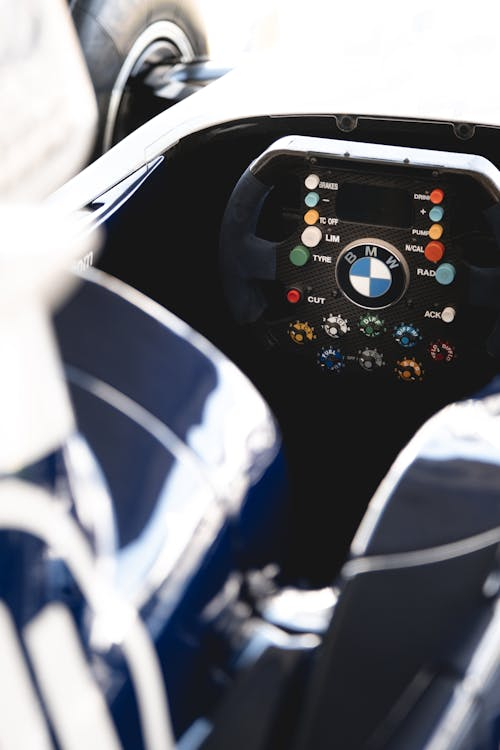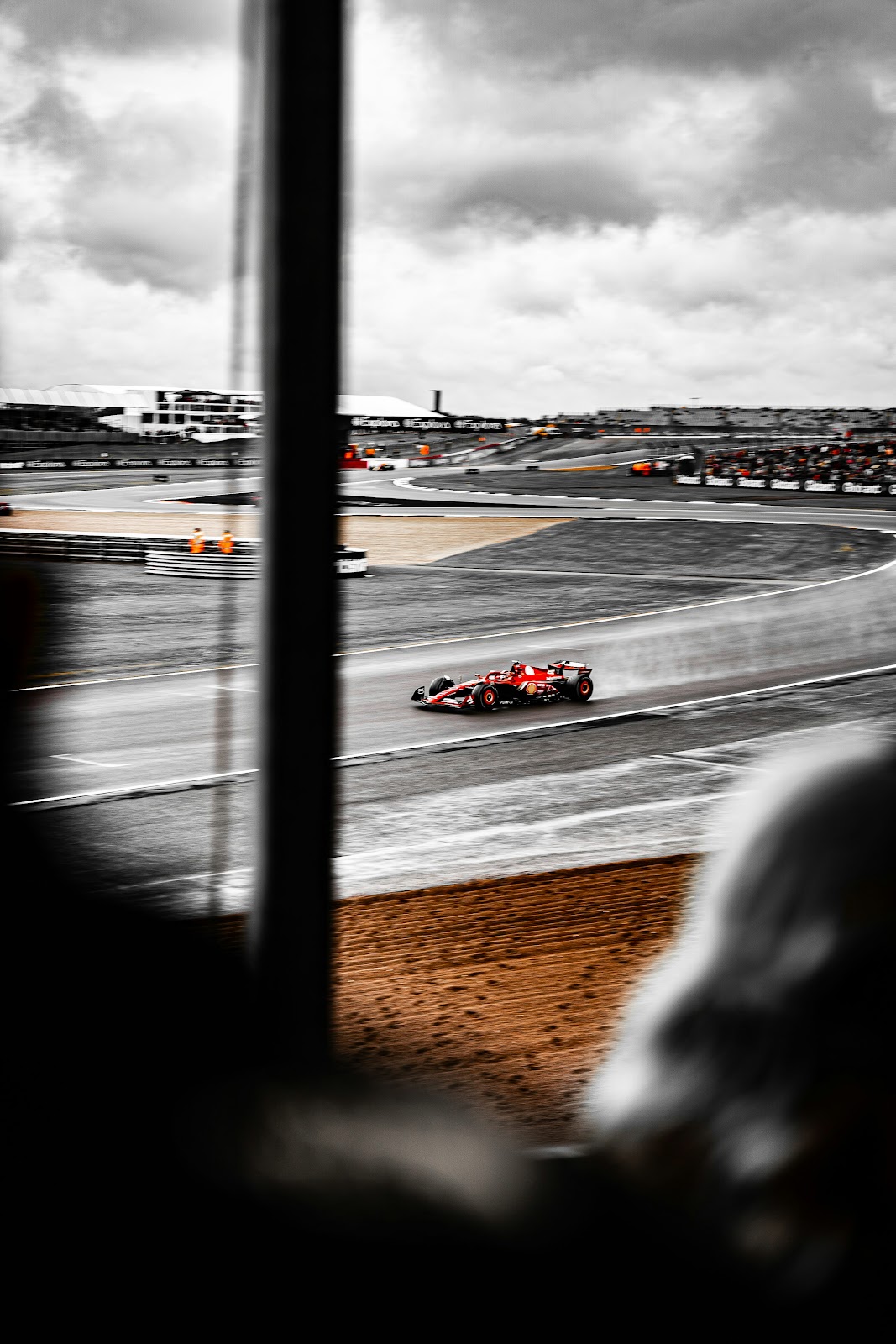Do F1 Cars Have a Clutch Pedal? The Truth About Formula 1 Transmission Systems

The world of Formula 1 represents the pinnacle of automotive engineering and advanced technology. Every component used in F1 cars is designed for maximum performance and competitive advantage.
One question that frequently puzzles motorsports enthusiasts is whether F1 cars have a clutch pedal like traditional road cars. The short answer is no.
Modern F1 cars don't have a clutch pedal, but the complete story involves fascinating technical analysis of how these incredible machines handle gear changes and why this peculiarity exists in Formula 1 racing.
How Do Modern F1 Cars Handle Gear Changes Without a Traditional Clutch Pedal?
Unlike your standard car or street car, which typically features three pedals (accelerator, brake, and clutch), an F1 car operates with only two pedals.
The absence of a manual clutch pedal doesn't mean these race cars lack a clutch system entirely. Instead, Formula 1 has evolved to use sophisticated paddle shifters and electro-hydraulically controlled transmission systems that have revolutionised how drivers shift gears during an F1 race.
Every Formula 1 car employs an advanced semi-automatic transmission. This system represents a significant departure from both manual transmissions found in road cars and the fully automatic transmissions common in everyday vehicles.
The F1 clutch system operates through paddle shifters located on the back of the steering wheel, allowing the F1 driver to change gear with lightning-fast precision. When a racer wants to shift gears, they simply pull the appropriate paddle on the steering wheel.
The right paddle handles upshifts, whilst the left paddle manages downshifts.

This concept of a paddle-shifted transmission eliminates the need for drivers to operate the clutch manually. The system's control unit manages clutch engagement and disengagement automatically through sophisticated sensors and electro-hydraulically controlled mechanisms.
The sequential gearbox in an F1 car differs fundamentally from traditional manual systems. Instead of requiring the driver to use the clutch pedal and manually engage different gears, the sequential system only allows shifting through gears in order --- either up or down the sequence.
This design ensures faster gear changes whilst maintaining optimal traction and throttle control throughout the acceleration process.
The Role of Paddle Shifters in Formula 1
The F1 steering wheel features two clutch paddles in addition to the gear-change paddles, but these serve a different purpose than a traditional road car clutch. These paddles primarily come into play during race starts and when the car is at a standstill.
The driver can use these paddles to find the clutch's bite point and control the launch from the starting grid, giving them maximum control over traction during the crucial first moments of an F1 Grand Prix.
Ferrari played a pivotal role in this evolution when they introduced the Ferrari Type 640 with semi-automatic transmission during the 1989 Brazilian Grand Prix.
This innovation marked the beginning of the end for manual clutch pedals in Formula 1, as teams recognised the competitive advantage offered by faster gear changes and reduced driver workload.
What Happened to the Clutch Pedal in Formula 1's Evolution?
The transition from manual transmissions to the current paddle-shifter system didn't happen overnight.
In the early days of Formula 1, cars used traditional manual clutch systems similar to road cars, complete with a clutch pedal that drivers had to operate with their left foot. It required significant skill and coordination, as drivers needed to manage clutch disengagement, gear selection, and throttle control whilst navigating challenging circuits like Monaco at incredible speeds.
The evolution began in earnest during the late 1980s and early 1990s when teams started experimenting with semi-automatic systems.
The Ferrari Type 640 eliminated the need for the driver to use a traditional clutch pedal during gear changes. Instead, the system used an electro-hydraulically controlled clutch that engaged and disengaged automatically when the driver pulled the paddle shifters.
By the mid-1990s, most Formula 1 teams had adopted similar systems, recognising that the technology offered significant advantages in terms of both performance and reliability.
The elimination of the clutch pedal allowed drivers to keep both hands on the F1 steering wheel during gear changes, improving their ability to maintain precise control of the vehicle whilst navigating complex racing situations.
The Technical Revolution in F1 Transmission Systems
Since 2008, Formula 1 regulations have mandated specific transmission configurations to ensure fair competition and control costs.
Modern F1 cars must use eight forward gears and operate with transmission systems that provide consistent performance across all teams. The current regulations also specify that the clutch system must be mechanical rather than fully automatic, ensuring that driver skill remains a crucial factor in race performance.
The multi-plate clutch used in contemporary F1 cars represents a sophisticated piece of engineering. Unlike the single-plate clutch found in most road cars, F1 clutches feature multiple friction plates to handle the enormous power output of these high-performance engines.
The ECU (Electronic Control Unit) manages the clutch engagement with microsecond precision, ensuring optimal power transfer from the engine to the transmission whilst protecting the drivetrain from excessive stress.
Why Do F1 Drivers Still Need Clutch Control Despite No Pedal?
Whilst F1 cars don't have a clutch pedal for normal driving, clutch control remains absolutely critical for several aspects of Formula 1 racing.
The most obvious application occurs during race starts, where drivers must use clutch paddles on their steering wheel to achieve the perfect launch. This process requires exceptional skill and split-second timing, as the driver must find the optimal bite point whilst managing throttle control and traction.
The launch control systems used in F1 are far more primitive than those found in high-performance road cars. F1 drivers cannot rely on electronic aids to optimise their starts. Instead, they must use their reflexes and experience to modulate the clutch paddles and achieve maximum acceleration from standstill.
It's one of the most challenging and skill-intensive moments in all of motorsport.

During pit stops, clutch control becomes equally important. When an F1 car comes to a complete stop in the pit lane, the driver must use the clutch paddles to select the appropriate gear and execute a smooth departure.
The Complexity of Modern F1 Clutch Systems
The sophistication of modern F1 clutch systems extends far beyond simple gear changes. These systems integrate with numerous other vehicle systems, including traction control (though currently limited by regulations), engine mapping, and energy recovery systems.
Unlike fully-automatic systems that are commonly found in road cars, F1 clutch systems maintain a direct connection between driver input and mechanical response. When a driver pulls a paddle shifter, the system executes the gear change, but the timing and execution still depend on the driver's skill and understanding of the car's behaviour.
The sequential nature of F1 gearboxes means that drivers cannot skip gears during normal operation, unlike traditional manual systems where a driver might shift from third gear directly to fifth gear. This restriction ensures consistent and predictable behaviour whilst allowing the transmission to optimise shift speed and smoothness.
Conclusion
The absence of a clutch pedal in modern F1 cars represents one of the most significant technical evolutions in Formula 1 history. Whilst these incredible machines don't feature the traditional three-pedal setup found in road cars, they use sophisticated semi-automatic transmission systems.
The current system strikes an optimal balance between technological advancement and driver skill requirements. As a result, F1 remains the ultimate test of both human ability and engineering excellence.
Frequently Asked Questions
Can F1 drivers manually override the automatic clutch system?
Yes, during specific circumstances such as race starts and pit stops, F1 drivers have manual control over clutch engagement through the paddle system. However, during normal racing conditions, the system operates automatically when gear changes are initiated.
How fast can F1 cars change gears compared to road cars?
Modern F1 transmission systems can complete gear changes in approximately 50-150 milliseconds. These systems are significantly faster than even the quickest dual-clutch systems in high-performance road cars, which typically require 200-300 milliseconds.
What happens if the paddle shifter system fails during a race?
If the electronic paddle shifter system fails, drivers can sometimes use backup procedures to change gears manually, though this is extremely difficult and significantly slower. Most transmission failures result in retirement from the race.
How do F1 clutch systems differ between teams?
Whilst the basic operating principles are standardised by regulations, teams can develop their own clutch control algorithms and mechanical designs within the specified parameters. It leads to subtle differences in how each car's system behaves and responds to driver inputs.

